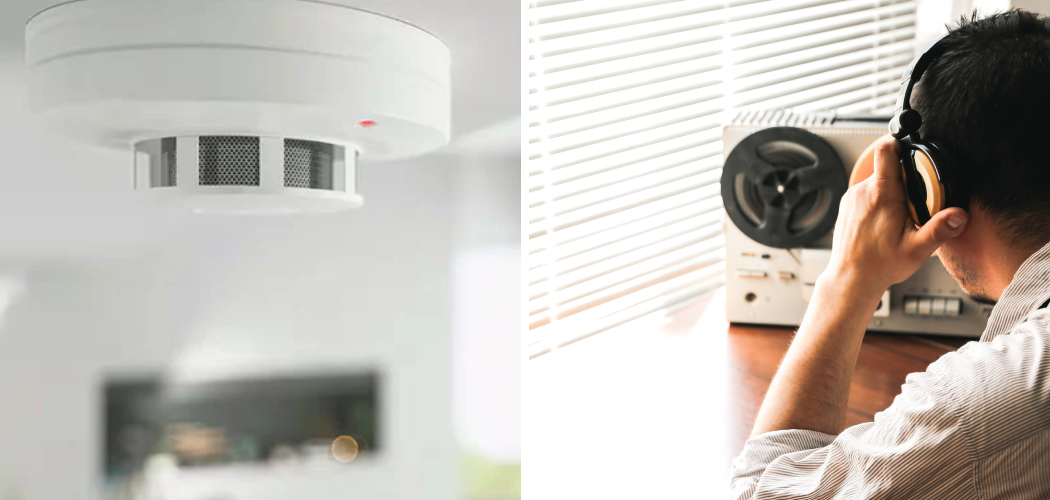In an era where technology pervades every aspect of our lives, maintaining privacy and security within your home is more important than ever. Knowing how to tell if your home is bugged can safeguard your personal space from unauthorized surveillance and protect your confidential information. There are several reasons someone might bug a home, ranging from espionage and theft to more personal motives such as spying by jealous partners or overzealous landlords. This article will equip you with the knowledge to recognize the signs of possible surveillance, conduct a physical inspection for bugs, and use detection devices effectively.
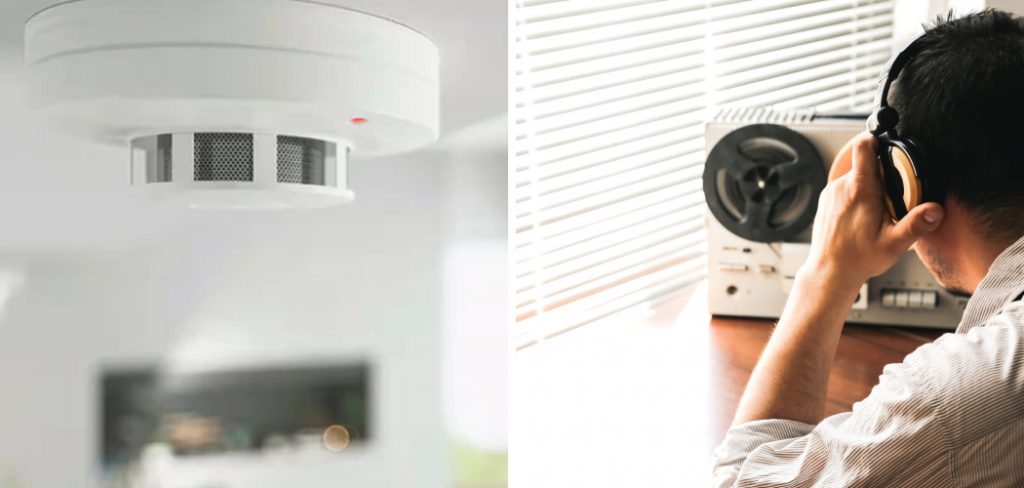
It will also guide you in performing a technical sweep, implementing digital security measures, and understanding behavioral indicators of surveillance. We will also explore legal and law enforcement options to protect your rights. By following these steps, you can take proactive measures to secure your home and maintain your peace of mind.
How to Tell if Your Home Is Bugged: Signs of Possible Surveillance
One of the first signs that your home may be bugged is the presence of unusual sounds or background noise during phone calls or conversations. These sounds can include clicking, static, or buzzing noises, which may indicate that your line is being tapped or monitored. It might be an alert to further investigate if you notice consistent audio anomalies.
Another red flag is electronic interference with radio or TV signals. If your devices start experiencing disruptions such as sudden static, signal loss, or unusual noises while in use, it could be a sign that surveillance devices are nearby and causing radio frequency interference. This kind of disturbance often occurs when bugs transmit information to the eavesdropper.
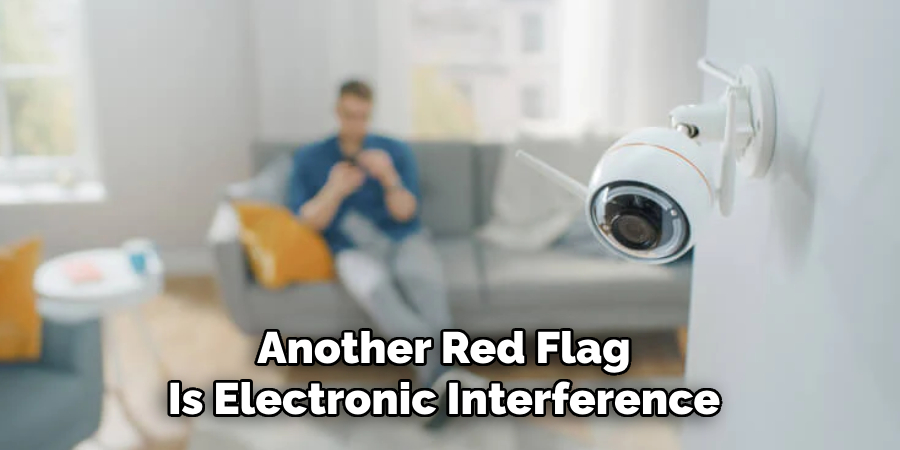
Additionally, the sudden appearance of unfamiliar objects or changes in your environment can be a telltale sign of surveillance. Be looking for items that seem out of place or newly introduced without explanation, such as new electronic gadgets, light fixtures, or decorative items. These could potentially hide miniature cameras or microphones. By staying vigilant of these signs, you can take the necessary steps to protect your privacy and ensure your home remains a secure sanctuary.
Physical Inspection for Bugs
Conducting a thorough physical inspection is crucial in identifying and removing surveillance devices from your home. Begin by preparing the necessary tools for the job: a flashlight and a magnifying glass will be essential for spotting tiny, hidden devices.
Start your inspection by checking common hiding spots. Electrical outlets are a frequent target for bug placement; carefully remove outlet covers and inspect the interior for any unusual components or wires. Smoke detectors are another popular location, as they offer an unobtrusive vantage point to monitor your surroundings. Detach the smoke detector from the ceiling and examine its interior for any small microphones or transmitters.
Next, move on to your furniture. Pay special attention to items like couches, chairs, and desks, focusing on seams, undersides, and any voids where a bug could be concealed. Use your flashlight to illuminate dark areas and your magnifying glass to inspect for any small, suspicious devices.
Additionally, scrutinize any new home additions, whether electronic gadgets, decorative items, or light fixtures. If something seems out of place or was introduced without your knowledge, it’s worth a closer look. For instance, an unfamiliar picture frame could contain a hidden camera or microphone.
Finally, be methodical and systematic in your approach, covering every room and leaving no potential hiding spot unchecked. Following these detailed steps can significantly reduce the risk of unauthorized surveillance and ensure your home remains a private and secure space.
Using Detection Devices
Electronic bug detectors are specialized tools designed to identify hidden surveillance devices in your home. They can sense radio frequencies (RF) emitted by bugs and detect the presence of infrared (IR) signals from covert cameras. Understanding their capabilities and proper usage is crucial for effective bug detection.
To begin with, ensure you have a reliable bug detector. Contemporary devices come with various features, such as RF, IR, and magnetic field detection, to identify electronic components. Start by familiarizing yourself with the device’s user manual to understand its functionalities and settings.
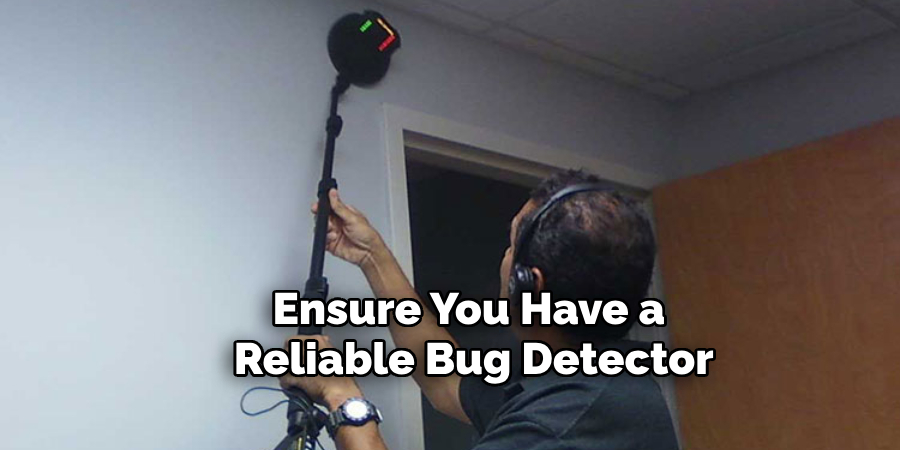
When using a bug detector, follow these steps:
- Turn Off all Wireless Devices: Minimizing interference from your gadgets will make the detection process more accurate.
- Calibrate the Detector: Adjust the sensitivity settings according to the instructions, often beginning with a medium sensitivity level.
- Sweep Each Room Systematically: Move methodically from one room to another, focusing on likely hiding spots such as electrical outlets, smoke detectors, light fixtures, and furniture seams. Hold the detector close to these areas while performing a slow and thorough scan.
Understanding how bug detectors work is essential for interpreting their readings. RF detectors pick up radio frequency emissions from transmitting bugs, while IR detectors can sense infrared light from hidden cameras often used during night surveillance. When the detector alerts you to a potential bug, it might emit beeps, visual signals, or vibrations.
Finally, carefully interpret the readings. Anomalies like a significant increase in signal strength or frequent alerts in a particular spot indicate a possible bug. By methodically scanning your home and correctly reading the detector’s signals, you can uncover hidden surveillance devices and effectively maintain your privacy and security.
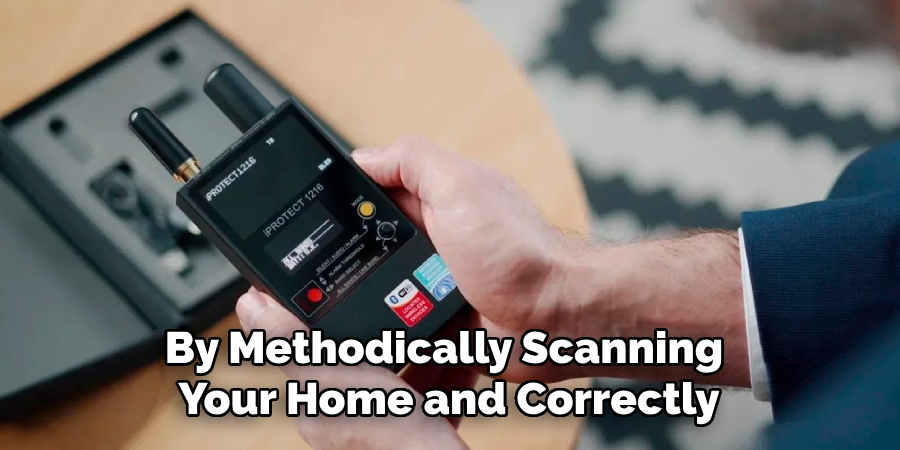
Conducting a Technical Sweep
Hiring a professional bug-sweeping service can be a prudent step in ensuring your home is free from surveillance devices. These experts have advanced tools and the technical know-how to detect even the most sophisticated bugs that may elude a layperson’s inspection.
Understanding legal implications and privacy considerations is crucial when conducting a technical sweep. It’s important to be aware of local laws regarding surveillance and privacy to ensure that any actions you take adhere to regulatory standards. Unauthorized surveillance can have severe legal consequences for the eavesdropper and potentially for anyone conducting unauthorized counter-surveillance activities.
Working with certified professionals to conduct a thorough sweep provides peace of mind and heightened security. Certified technicians undergo rigorous training and adhere to industry standards, ensuring a comprehensive evaluation of your home. They can identify the presence of hidden bugs, suggest effective removal strategies, and advise on preventative measures to enhance your home’s privacy.
By hiring a reputable bug-sweeping service, you ensure that your efforts to maintain a secure and private living environment are both effective and legally compliant. This professional approach identifies potential threats and fortifies your home against future intrusions, safeguarding your personal space and peace of mind.
Digital Security Measures
Protecting against digital surveillance is critical in this age of pervasive technology. Hacking and remote monitoring are common threats that can compromise your privacy, making employing robust digital security measures essential. One effective strategy is using encryption for sensitive communications. Encryption transforms readable data into encoded text, which can only be deciphered by authorized parties possessing the decryption key. This protects your emails, messages, and files from prying eyes.
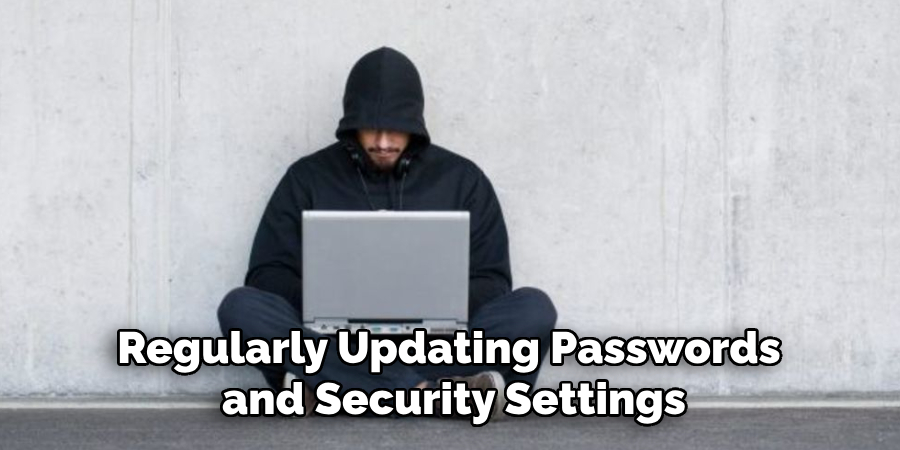
Another vital step is regularly updating passwords and security settings on your devices. Use complex, unique passwords for each account and change them periodically. A good password manager can help you keep track of these details without the hassle. Additionally, two-factor authentication (2FA) can be enabled wherever possible to add an extra layer of security.
Make sure your device’s operating system and software are kept up-to-date. Manufacturers frequently release updates to patch security vulnerabilities, and neglecting these updates can leave your devices susceptible to attacks. Be vigilant about the apps you download and the permissions you grant them, as malicious software can be a gateway to your personal information.
By adhering to these digital security practices, you can significantly reduce the risk of digital surveillance and ensure your private communications and data remain secure.
Behavioral Signs of Surveillance
Detecting surveillance isn’t always about finding hidden devices; it sometimes involves noticing peculiar behavior. Unusual actions from neighbors or strangers can be telltale signs. For instance, unfamiliar vehicles parked near your home for extended periods or individuals loitering around your property might indicate surveillance. Similarly, if someone seems privy to your private conversations or actions without a clear explanation, this could suggest your security has been compromised.
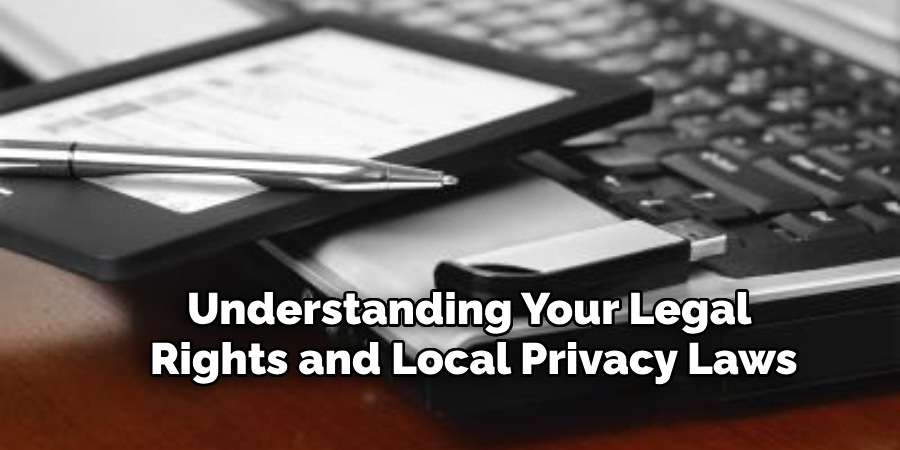
Trusting your instincts is crucial. If you feel consistently watched or notice small but strange occurrences in your daily routine, it’s important to act on these suspicions. Start by meticulously documenting these incidents and any related details. Taking proactive measures, such as tightening your digital security and possibly hiring a professional to thoroughly sweep your home, can help ensure your personal privacy remains intact. In any circumstance, vigilance and prompt action are your best defenses against intrusive surveillance.
Legal and Law Enforcement Options
Understanding your legal rights and local privacy laws is crucial if you suspect that your privacy has been compromised. Different jurisdictions have varying regulations regarding surveillance, and knowing these laws can help you make informed decisions. If you believe you are a victim of illegal surveillance, contacting law enforcement should be one of your first steps. Authorities have the expertise and resources to investigate your claims and take appropriate action against offenders.
Additionally, seeking legal advice is advisable to understand the complexities of your situation better. An attorney specializing in privacy or criminal law can provide guidance on your next steps, including how to document evidence or file a lawsuit. Legal counsel can also help you navigate any potential repercussions of unauthorized counter-surveillance. By leveraging legal and law enforcement options, you can enhance your efforts to protect your privacy and take action against those who infringe upon it.
Conclusion
In summary, understanding how to tell if your home is bugged involves a combination of technical sweeps, digital security measures, and keen observation of behavioral signs. Employing professional bug-sweeping services ensures a thorough investigation using advanced tools to detect hidden devices. Complementing this with robust digital security practices, such as encryption, regular password updates, and software patches, significantly reduces the risk of digital surveillance. Noticing unusual behaviors and trusting your instincts can also provide early warning signs of potential intrusion.
Taking proactive steps is crucial for protecting your privacy. Collaborate with certified professionals, stay informed about local laws, and contact legal and law enforcement authorities if you suspect illegal surveillance. Maintaining a secure and private home environment isn’t just about removing existing threats; it’s about creating a vigilant framework to prevent future intrusions. By adopting these measures, you can safeguard your personal space and achieve greater peace of mind.

